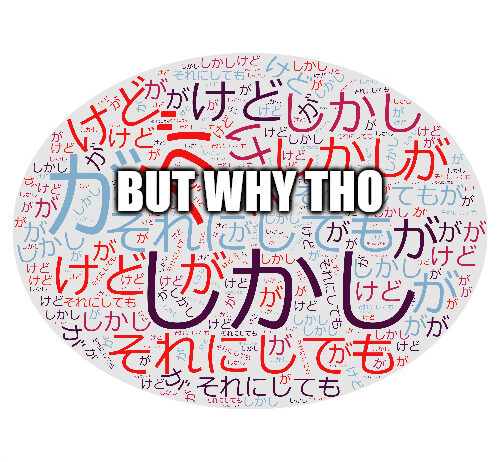The Detail Woman here, back with another Japanese learning and translation post.
Have you ever felt betrayed by your introduction to Japanese words for “but”?
If so, I get it. が、けど、しかし、and それにしても are all Japanese words that first get taught to us as “but,” and yet they often seem to mean something else in context.
I’d bet that a lot of readers are already familiar with this issue when the “buts” come in the middle of a sentence. However, my Japanese Phrase of the Month for December will be the sentence-beginning それにしても, and that one is pretty tricky if you don’t already have a handle on the “buts” that occur mid-sentence.
So if you’re a beginner, or you’d just like a refresher on mid-sentence “buts,” I’ve got you covered in this post. And if you already know all about these, feel free to skip to the next post!
The Mid-Sentence Conjunctions「が」and「けど」
You may already know that「が」and「けど」mean “but” a lot of the time… but they also like to hang out in sentences with no contrast in them.
There they are, seemingly random to our English-mode ears, just leading you into the next clause.
近藤:昨日あの新しくできた店に行ったけど、結構おいしかった。
松本:じゃあ、僕も今度行ってみるか。
Kondo: I went to that new restaurant yesterday, and it was pretty good.
Matsumoto: Then maybe I’ll go check it out sometime soon, too.
In English, we would never say “I went to that new restaurant yesterday, but it was pretty good.” But in the Japanese, this けど is functionally an “and.”
So why is it even there? Great question. They were not talking about that new restaurant before this, so Kondo’s first clause is gently ushering us into the new topic. His second clause is the comment he wants to give on this new topic. This new topic + が・けど + statement about the new topic construction happens all the time in Japanese. It’s one of those things you just have to relax and not worry about.
But that’s not the only thing we can do with a mid-sentence “but”!
近藤:おい、松本。鈴木さん知らない?
松本:いや、知らないけど、彼に何か用か?Note: This is a SUPER casual conversation. Don’t talk like this. 😉
This translates to:
Kondo: Hey, Matsumoto. Do you know where Suzuki-san is? [Have you seen Suzuki-san?]
Matsumoto: Nope. Did you need something from him?
That translation often makes Japanese learners think, “Hey, what happened to the けど? Shouldn’t it be ‘Nope, but did you need something from him?'” Even professional translators sometimes second-guess themselves: “Will I be deleting a nuance if I don’t put a ‘but’ here?”
Nope. Here, けど is just transitioning us from Matsumoto’s answer into Matsumoto’s follow-up question. So I guess you could put a “but” if you wanted to, but in English we don’t typically do that unless we’re leading into an offer to help. (Example: “No, but is there something I can help you with?”)
This mid-sentence usage of が or けど is similar to the first one in that it’s a facilitating conjunction with no particular meaning of its own. All it’s really doing is ushering us into a related question or statement.
Okay, we’ve covered our conjunction-type “buts.” But what about the ones that begin sentences? What do we do about those?
Well, that’s what I’ll be covering in tomorrow’s post. Stay tuned!

